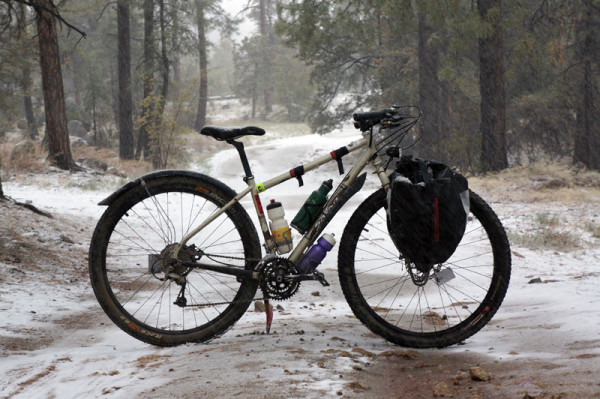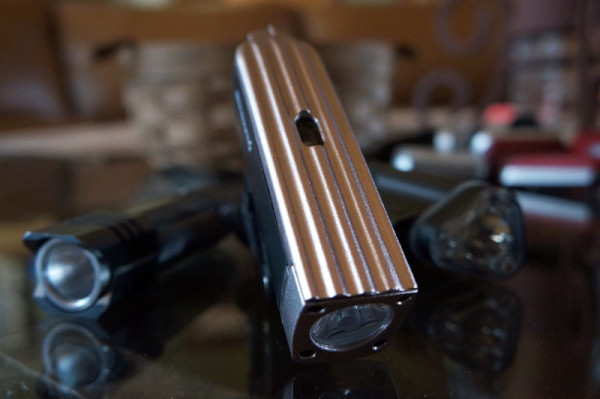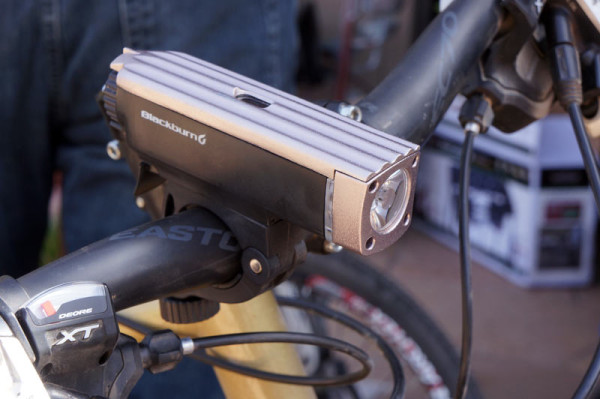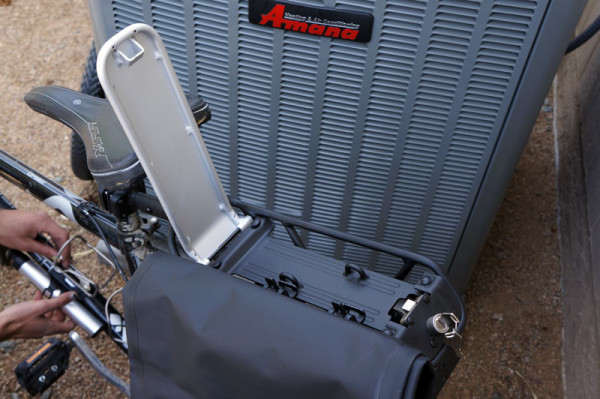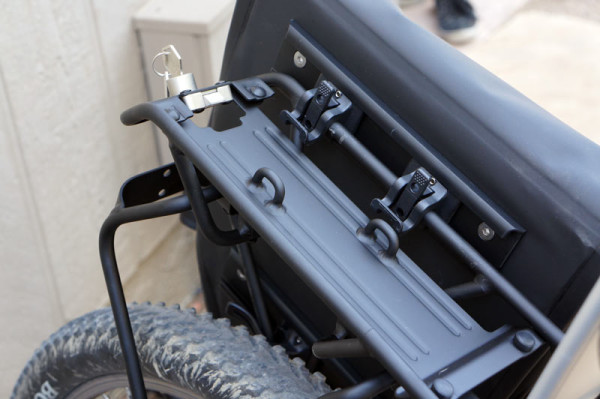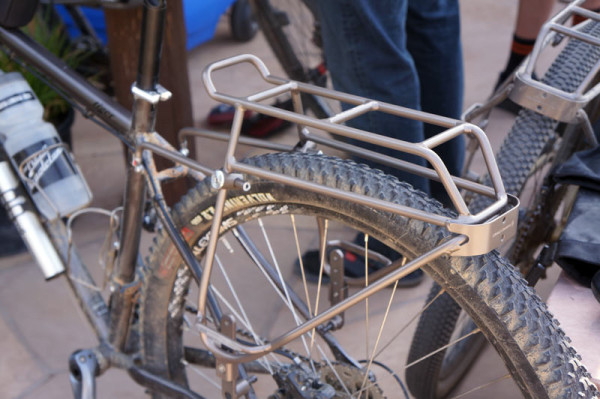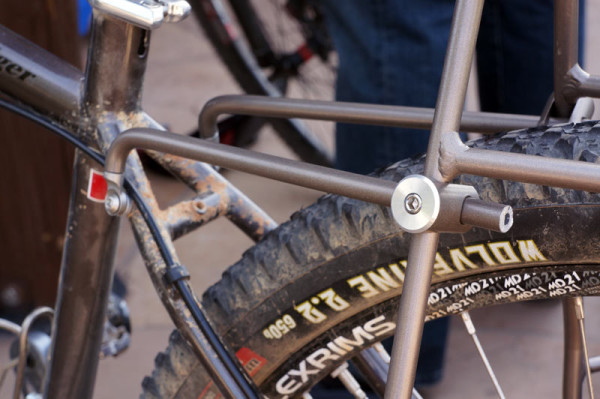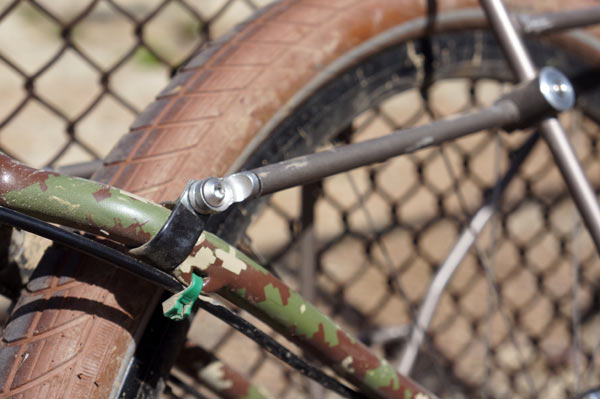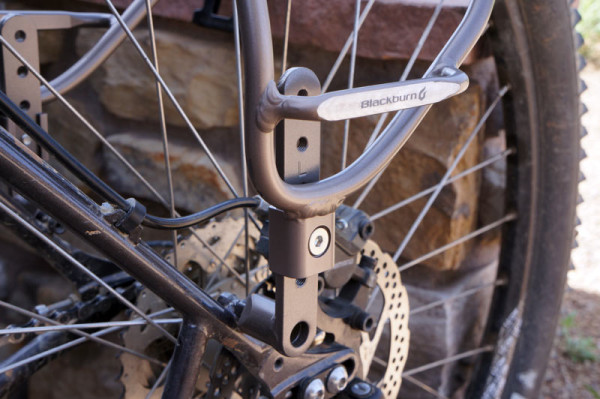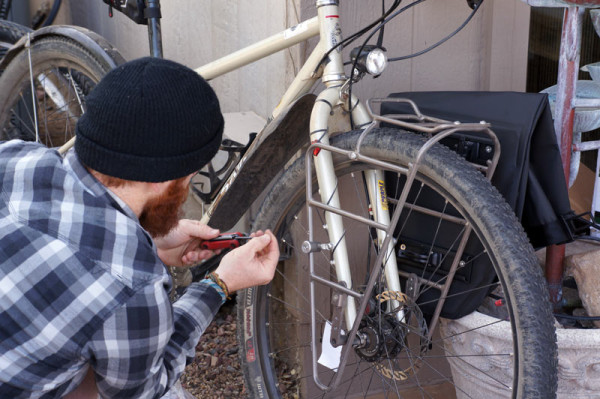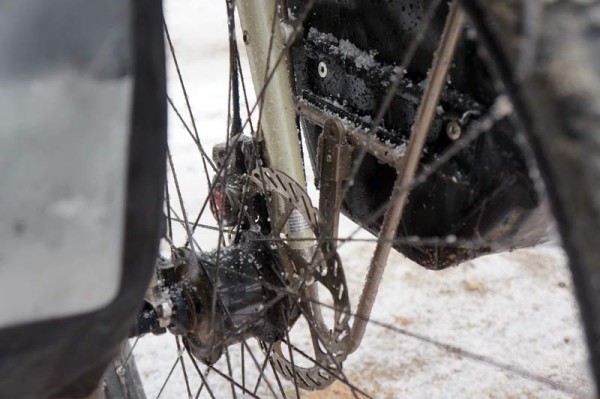Most of us are familiar with Blackburn Design. Their water bottle cage design is both timeless and ubiquitous. And I’d bet many of us have had one of their mini pumps at some point. But, for me anyway, they’ve always been one of those brands whose story was a non thought, they just were.
Now, having spent a long weekend with the crew, from the president to designers to marketers, there’s something to tell. A lot to tell, actually, and it’s inspiring in that it’s further proof that so many brands in the industry are born and thrive on people who are passionate about bikes and about making all of our rides better. Their story goes a little something like this…
In 1975, Jim Blackburn saw a need for well designed accessories that were easy to use and easy to find. Simple things like a rear rack were surprisingly hard to source in the U.S. So he made them and helped bring industrial design to the cycling world.
People like Jim Gentes, who went on to start Giro, helped with early design. Robert Egger, who’s now one of Specialized’s lead designers, was also involved early on. And Mike Sinyard was an early distributor.
Then, in 1992, Bell Sports acquired the brand…
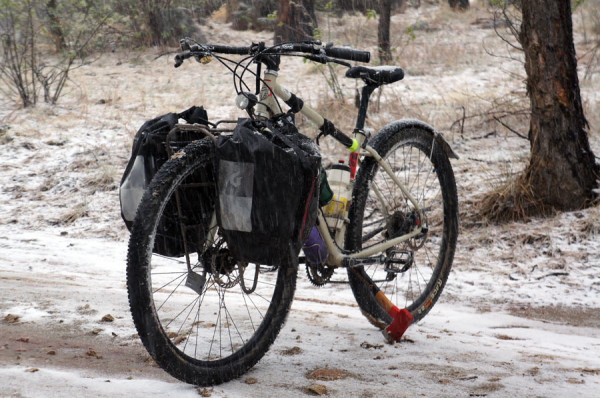
…and for a while, they produced a lot of different things. Those things didn’t always share the same design language. Which led to a diverse collection of not always coherent design or functionality and no clear brand identity.
Robin Sansom came on board two years ago and took over the brand about six months later. He came from the brand and product side of the industry, having developed the Ute bike for Kona, the Globe brand for Specialized and the Yuba cargo bike. So he was familiar with the kinds of bikes that much of Blackburn’s new products are likely to end up on.
To rein in the scattered SKUs and reinvigorate the brand, they created a brand Field Guide. It serves as the reference point for any new product ideas, defining who they make products for. What the products should do. What problems they should solve. Ultimately, they decided their real goal was to help people ride places bikes weren’t originally intended to go. As they put it, they “design for an attitude, not a demographic.” Which means if the products work for multi-day, rough and tumble, off-the-grid adventure touring, they’ll work fantastically for commuting. And everything in between.
So the gear must be “mission critical” worthy. As in, built to withstand anything you can throw at it. That can be as simple as ensuring their bottle cages won’t eject your bottle. Or that your rack and bag won’t rattle loose or rip off in a wipe out. And making sure the products will hold up for many years, which is why they have a lifetime guarantee on everything they sell.
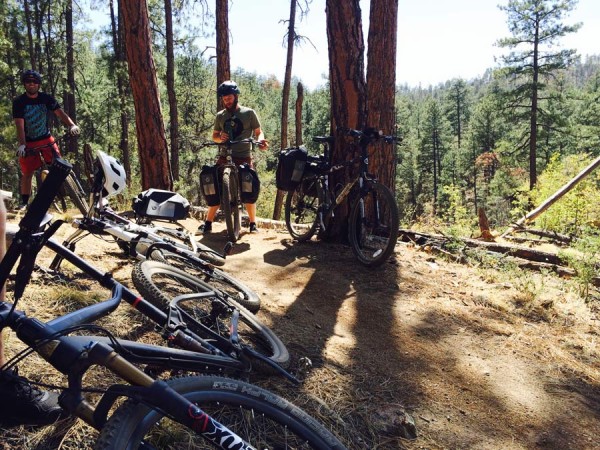
It’s also why they started the Blackburn Ranger program last year, which logged more than 10,000 miles. It puts their products on the road, trail and path year-round for weeks or months at a time in varied conditions for real world testing. Example: This year several of them will be riding the PCH from Vancouver to Mexico. Others will tackle the Great Divide route, among various smaller adventures throughout the year. We think they need an East Coast adventure…
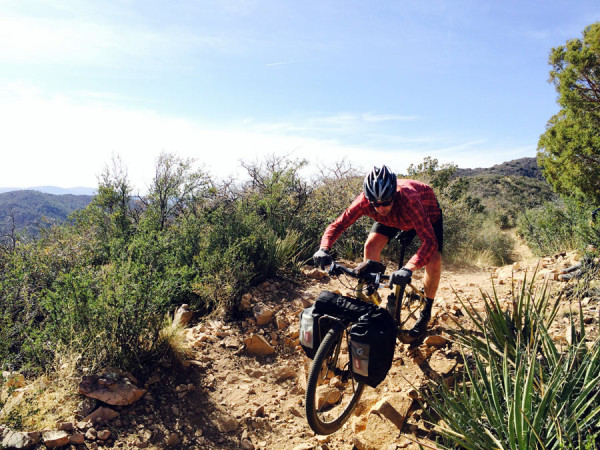
To accomplish those goals while keeping everything looking and acting like a tight family unit, they developed four Design Pillars. The list boils down to: Products must be durable, intuitive, modular with several of their products and the vast majority of frames, and timeless. All of that is considered in the look, feel, materials and usage opportunities.
One of the side benefits of the Ranger program is it gives the rest of us a taste of what it’s like to do some extreme touring. Maybe you’re not taking a month or two off, but seeing the type of equipment they use and seeing where they go really helps break down the mental barrier many cyclists (us included) have when considering such a trip. These ongoing mini lessons are all underwritten by Blackburn, and it’ll all be documented on their Facebook and Instagram accounts.
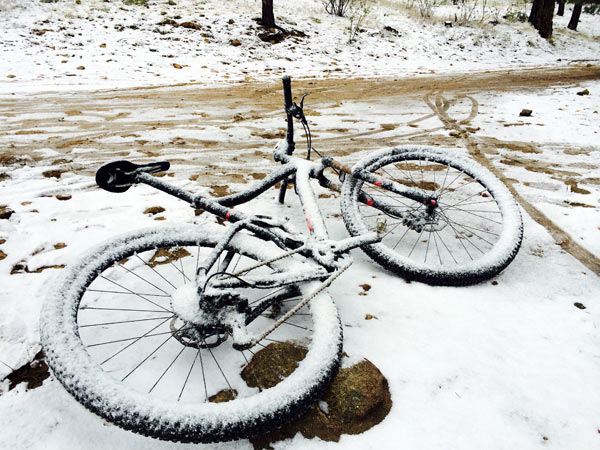
I got to hang out with several first year Rangers and a couple of this year’s class. We rode quite a bit over the weekend, including a 27+ mile mountain bike ride (including about 6 miles of wrong turns) with 5,100 feet of climbing.
Destination? Bacon base camp where they prepared almost 50 pounds of crispy, delicious pork product to hand up to Whiskey Offroad racers the next day. As we rode, the temps dropped, ending in a night that dipped below freezing and pelted tents with BB-sized ice and sideways blowing snow…which we got to ride in the next day. Would I have chosen to ride or camp in such conditions on my own? No. Was it insanely fun? Absolutely, just like every other ride that ended up in less than ideal conditions.
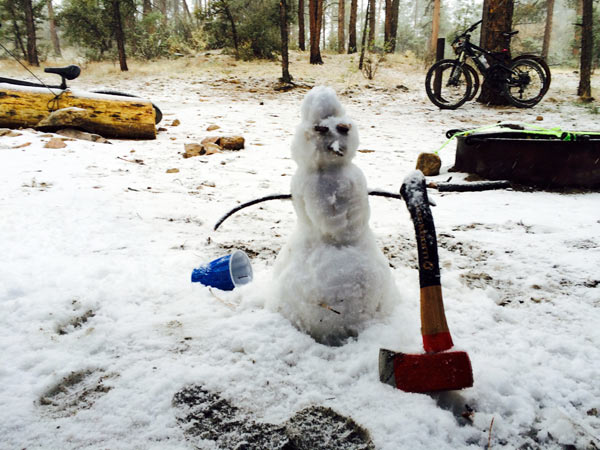
These types of weather swings and unexpected experiences are plenty common, especially on the longer trips the Rangers take. And as mentally taxing as some trips can be, pushing through also makes them some of the most rewarding. And that’s why many of us ride, right? To get away from it all for a bit. To see what we’re made of. And to have stories to tell around the next trip’s campfire.
Of the six Rangers who participated in 2013, two ended up quitting their day jobs after the program. Their justification? Simplify their lives and find ways of making a living around bicycles. To hear them tell it, the call of the bike and the freedom it provides is a powerful voice.
Want the equipment to get out there? Their current line is pretty extensive, and some pretty sweet new products are on the way this fall. Here are a few of their newer products the Rangers are using that are available now…
PRODUCTS
Part of the recent brand reinvention process was paring things down, if only temporarily. Over the past half decade, they had created a bunch of new categories, branching out into 13 total segments, including non-core items like trainers, computers, fenders and locks. For 2014/15, they’ll continue work on all of them, but the primary focus will be on just four: Lights, Pumps, Racks and Bags. They’re mostly grouped into four categories: Barrier (lightweight bags with seam sealed, waterproof construction), Outpost (products geared toward off road riding and rugged durability), Central (Commuter style and functionality) and Local (simple designs for folks that just use a bike to get around but don’t necessarily identify themselves as “cyclists”).
Two of the newest items are the Central Smart Front headlight and Interlock rear rack. The light, shown in two pics above, is part of the next generation of Blackburn lights, all of which will be built to ANSI FL-1 standard to guarantee run time and lumen output. All packaging will use standardized graphics to explain the features, making apples to apples comparisons easier for any brand using the same globally recognized standards. Their goal is to offer a higher lumen per dollar value.
At the top end of the commuter range is the Central Smart headlight. It packs 18-500 lumens into an alloy shell with a trick battery saving feature: Ambient light detection with automatic beam adjustment. A light sensor on the top detects ambient lights (street lights, etc.) and adjusts brightness infinitely through the entire range as necessary. Or just set it on flash, high or low and override the automatic setting. Retail’s $150.
The Interlock rear rack falls into the Central line but will fit any of their pannier and trunk bags. A top hatch flips up to allow bag installment, then flips down and locks shut to secure them to the bike.
Most of the panniers have a vertical compression strap that can run under the rack’s top flap, making the bags very difficult to get into. It’s mid-level security, which is plenty to thwart thieves of convenience. The rack retails for $119.99. They also make a seatpost-mounted Interlock rack that clamps to your post. The support beam kicks up at the post, but can be flipped to raise the platform up a few inches for better tire clearance on smaller bikes. That one’s $109.99. Check their video about the Interlock series here. The racks will work with other brands of bags, too, but the security feature is only designed for Blackburn’s bags. The mounting system is incredibly versatile, a design shared with the Outpost racks:
The Outpost World Tour racks aren’t brand new, but they’re pretty stellar and highlight the adjustability of most of Blackburn’s line.
The top portion is attached with adjustable length arms using conical bolt holes. Those, along with the sliding and rotating arm mounts on the rack, allow you to get an exact fit regardless of where your frame’s eyelets are. It’ll even let it mount to cantilever brake mounts in a pinch. It all adds up to a much sturdier, better looking arrangement than those flat metal bits you bend into shape. Once installed, simply cut the excess off the attachment arms for a lighter, sleeker rack.
They also come with rubbery coated adapters to clamp to standard frames with no eyelets or rim brake mounts.
The bottom attaches via a sliding post with multiple fixed bolt points.
The front Outpost World Tour rack is equally versatile. The sliding mount moves up and down to accommodate eyelet position on the fork. The “Top Deck” platform is removable if you’re only using panniers on the side.
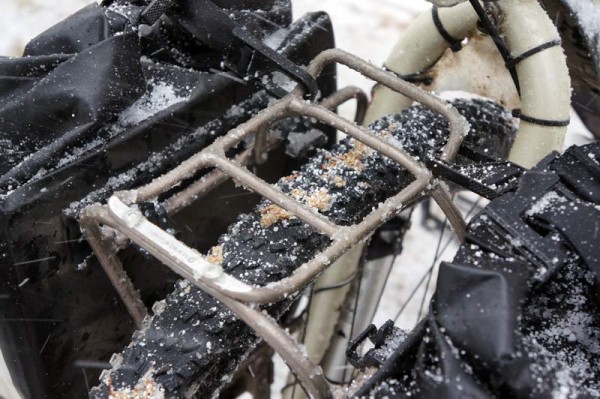
By no means are these few products representative of the breadth of their line…just a couple highlights and the brand new goods. Check BlackburnDesign.com for the full monty, there’s literally something for everyone. We just received the Interlock and a Barrier trunk bag for review, so look for that and several other slick new product intros later this fall.
Huge thanks to the crew at Blackburn for their time and hospitality (and bacon!) at the Whiskey Offroad.
